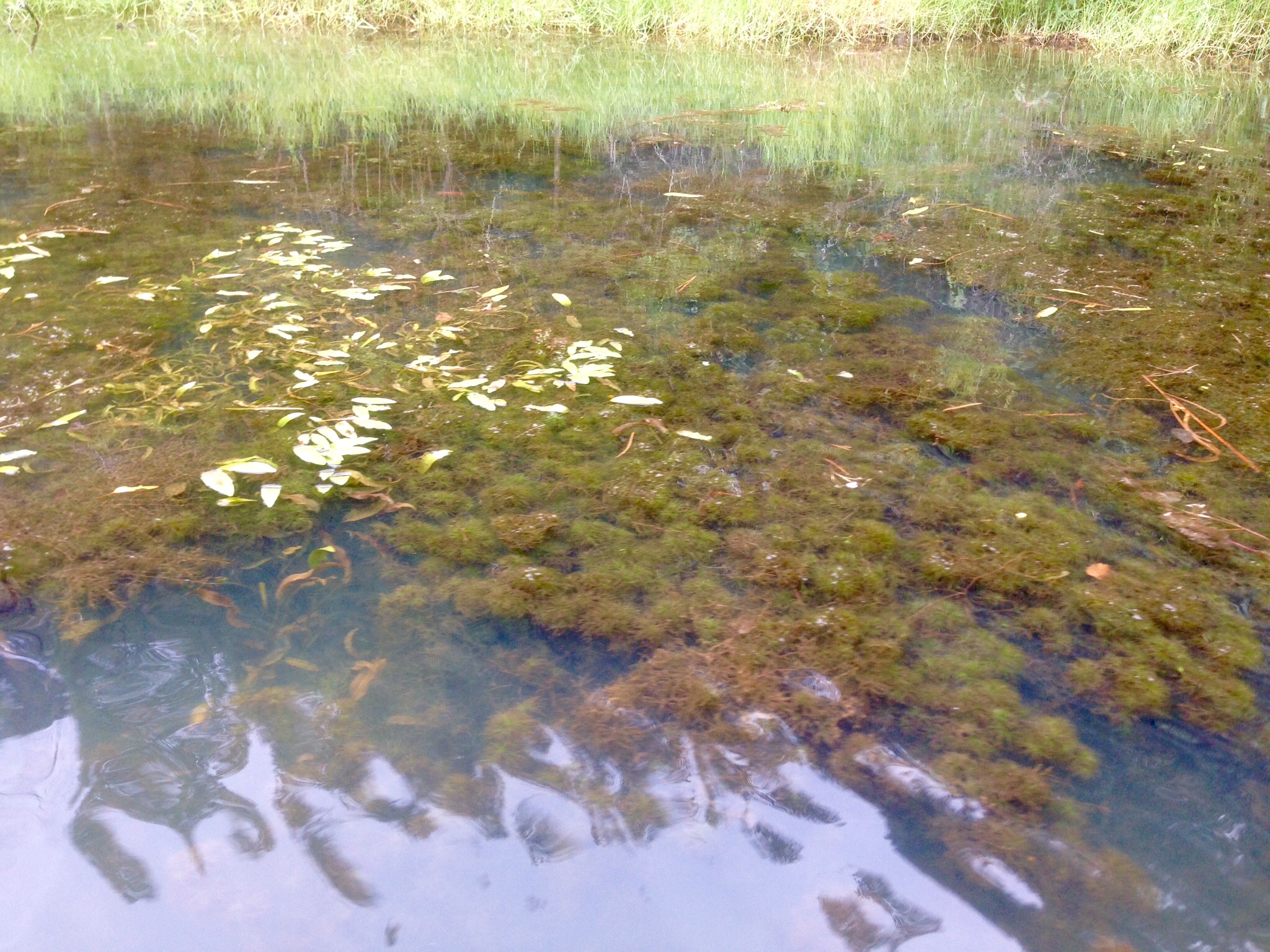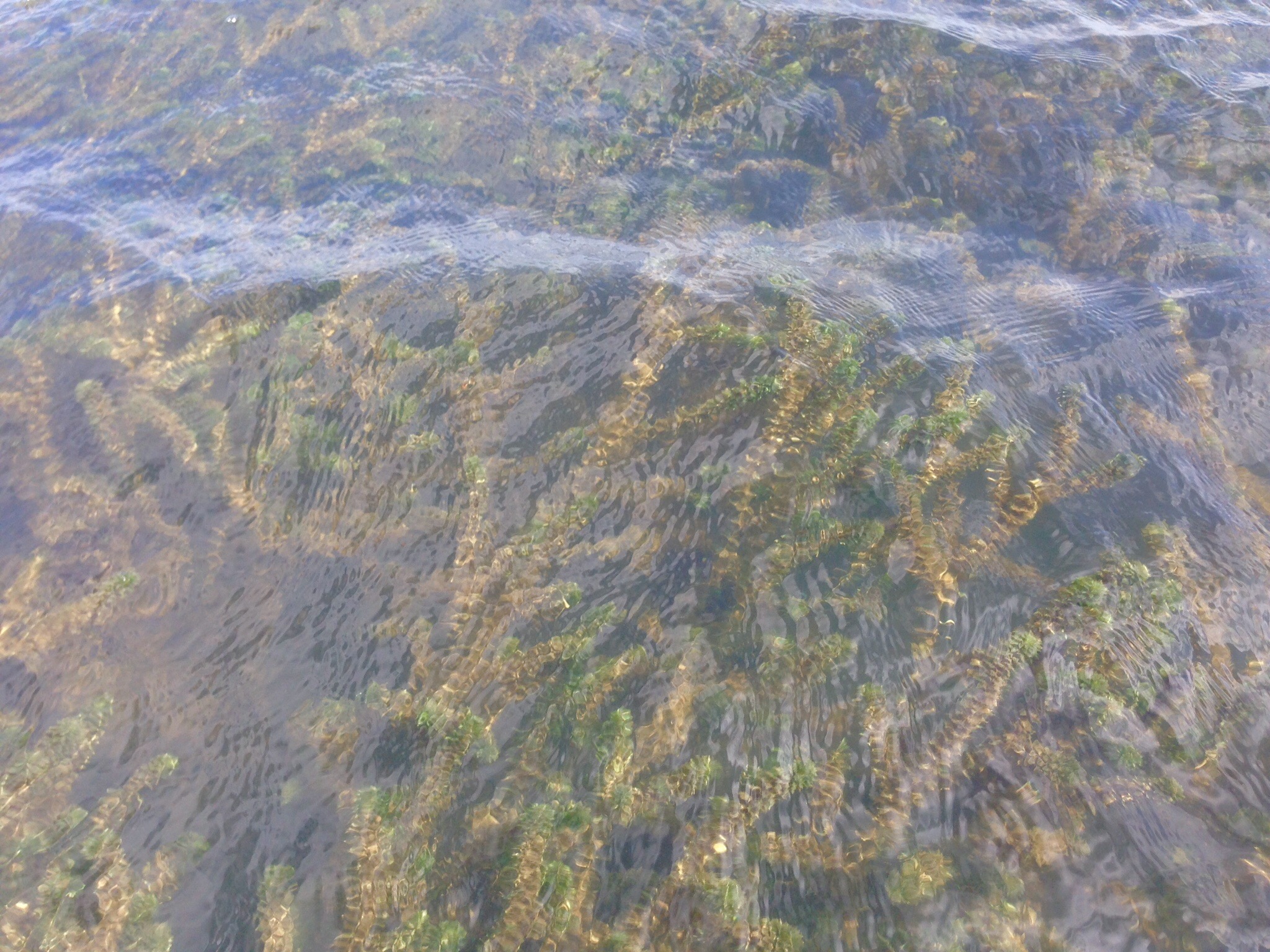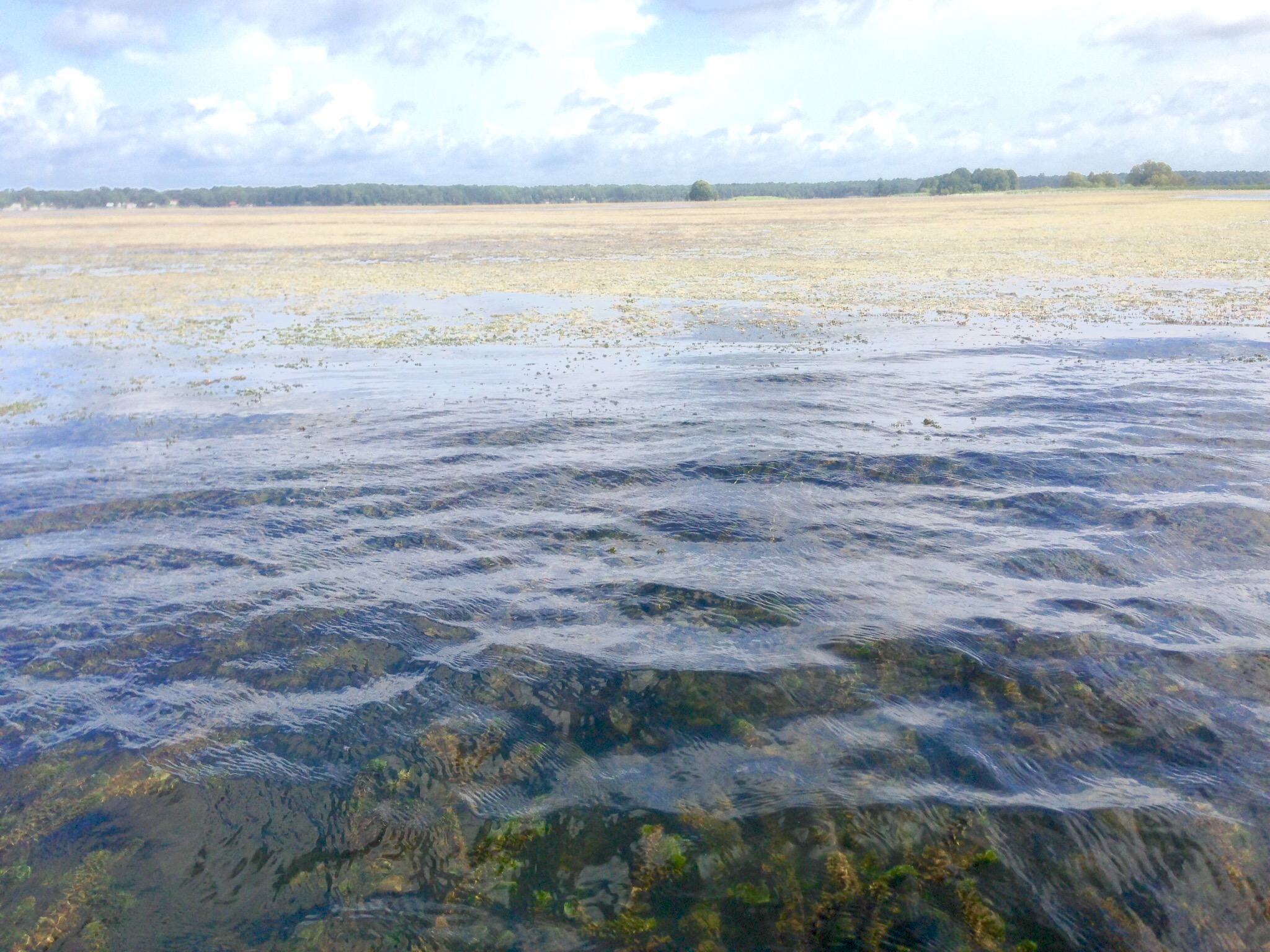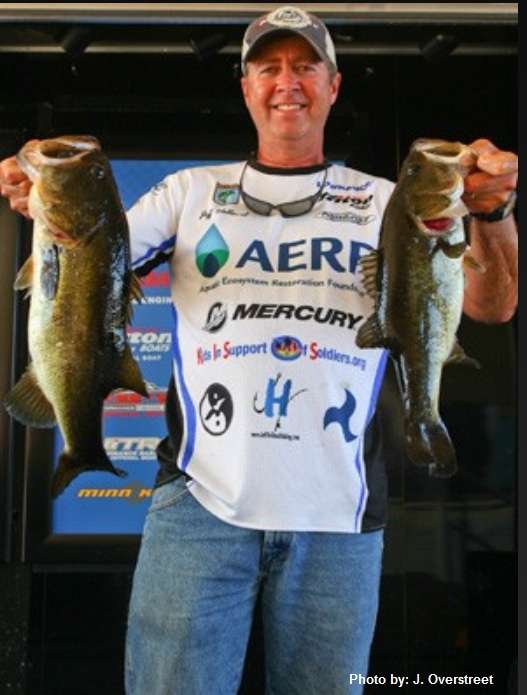
Fall is a time of year that many anglers like myself look forward to fishing. Cooler water and abundant plants allow anglers to use a wide arsenal of lures and fishing techniques.
I spent a few days scouting the biology of Lake Seminole and found a few items of interest to share with my Southern Open anglers.
Water sources
Maps of Lake Seminole show four key water sources, each providing unique ecosystems and water clarities to fish. Most of the water originates from the Chattahoochee River, with Flint River, Spring creek, and Fish Pond Drain contributing smaller volumes of water.
Water Color
 During my scouting trip, I found Chattahoochee River was silt-stained one day, and tannic-clear the next day when hydroelectric dam generation moved water overnight. Flint River water clarity varied from stained to clear, depending on the distance from the main river. Spring Creek and Fish Pond Drain remained consistent and clear each day of the scouting trip, most likely a result of slow water flow and hydrilla infestations.
During my scouting trip, I found Chattahoochee River was silt-stained one day, and tannic-clear the next day when hydroelectric dam generation moved water overnight. Flint River water clarity varied from stained to clear, depending on the distance from the main river. Spring Creek and Fish Pond Drain remained consistent and clear each day of the scouting trip, most likely a result of slow water flow and hydrilla infestations.
Aquatic Plants
 Lake Seminole hosts a wide range of plants growing above and below the waterline. Cattails, waterlilies, coontail, and pondweeds were prevalent, but hydrilla dominated most of the shallow areas on the reservoir.
Lake Seminole hosts a wide range of plants growing above and below the waterline. Cattails, waterlilies, coontail, and pondweeds were prevalent, but hydrilla dominated most of the shallow areas on the reservoir.
Hydrilla – the plant that causes so much controversy between anglers and water resource managers. Hydrilla (Hydrilla verticillata) has been described by weed scientists as “the perfect aquatic plant.” This plant is known to grow fast, reproduce by simple fragments, and requires lower nutrients and less sunlight than many other aquatic plants. The rapid growth of hydrilla is an adaptation from its need to survive the turbid waters of Asia where it originated.
As a Southern Open angler and professional biologist, I have seen firsthand how hydrilla ruins many of our ecosystems, alters our lake habitats, outgrows our native plants and chokes out boating areas. The lower end of Spring Creek on Lake Seminole is one such location of hydrilla overgrowth.
 Admittedly, when the plant is present, it’s a love/hate angler relationship, as fishing in hydrilla is good for catching bass. The plant shelters a huge list of aquatic insects and fish species. Yet, hydrilla is a bad plant, which continues to spread and threaten many of our nation’s fisheries, drinking water supplies, power utilities and flood control systems.
Admittedly, when the plant is present, it’s a love/hate angler relationship, as fishing in hydrilla is good for catching bass. The plant shelters a huge list of aquatic insects and fish species. Yet, hydrilla is a bad plant, which continues to spread and threaten many of our nation’s fisheries, drinking water supplies, power utilities and flood control systems.
Fishing Techniques
Fishing through sparse hydrilla usually only requires semi-weedless lures and the occasional snap of the rod tip to free a lure from the plant. Once the hydrilla mats form on the water surface, fishing options become limited to topwater frogs, spoons, weightless worms, and heavy weedless baits.
 A recent largemouth bass study by Dr Allen at the University of Florida confirmed what big-stick flipping experts know: oxygen levels under large mats of hydrilla were adequate enough for fish to swim everywhere under the mat, except in September in central Florida when oxygen dropped too low.
A recent largemouth bass study by Dr Allen at the University of Florida confirmed what big-stick flipping experts know: oxygen levels under large mats of hydrilla were adequate enough for fish to swim everywhere under the mat, except in September in central Florida when oxygen dropped too low.
Lake Seminole is expected to provide all these fishing options for anglers this fall.
Social Media
Many water resource agencies now use social media. This has improved the ability for anglers to learn about plants and discuss plant control options.
I encourage anglers to continue working aquatic plant managers to discuss plant issues like hydrilla and other local invasive species.
See you out on Lake Seminole in October.
The final Bass Pro Shops Bassmaster Southern Open will be taking place on Georgia’s Lake Seminole in Oct. 22-24.
Jeff is supported by Aquatic Ecosystem Restoration Foundation (AERF). Visit his webpage JeffHollandFishing.com

